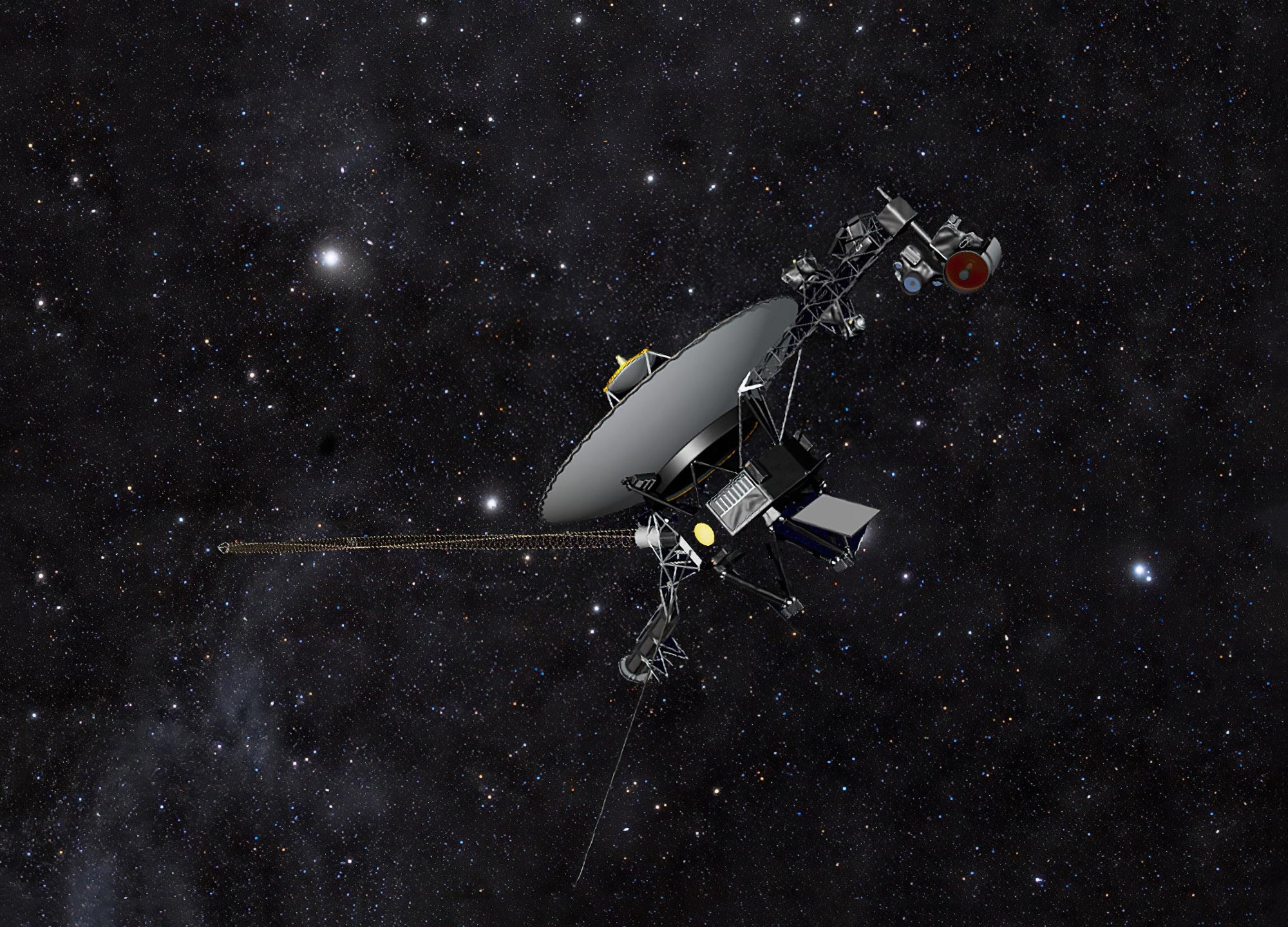
Konsep artis ini menunjukkan pesawat ruang angkasa Voyager NASA melawan medan bintang di kegelapan ruang angkasa. Kedua pesawat ruang angkasa Voyager melakukan perjalanan semakin jauh dari Bumi, dalam perjalanan ke ruang antarbintang, dan pada akhirnya akan mengorbit pusat Bima Sakti. Kredit: NASA/JPL-Caltech
Rencana tersebut akan membuat instrumen sains Voyager 2 berjalan selama beberapa tahun lebih lama dari perkiraan sebelumnya, memungkinkan lebih banyak penemuan dari ruang antarbintang.
Diluncurkan pada tahun 1977, pesawat ruang angkasa Voyager 2 berjarak lebih dari 12 miliar mil (20 miliar kilometer) dari Bumi, menggunakan lima instrumen ilmiah untuk mempelajari ruang antarbintang. Untuk membantu menjaga instrumen ini tetap berjalan meskipun pasokan listrik berkurang, pesawat ruang angkasa yang menua mulai menggunakan reservoir kecil daya cadangan yang disisihkan sebagai bagian dari mekanisme keselamatan onboard. Langkah tersebut akan memungkinkan misi untuk menunda penutupan instrumen sains hingga 2026, bukan tahun ini.
Mematikan instrumen ilmiah tidak akan menyelesaikan pekerjaan. Setelah mematikan satu instrumen pada tahun 2026, probe akan terus memberi daya pada empat instrumen sains hingga catu daya yang rendah memerlukan penghentian instrumen lainnya. Jika Voyager 2 tetap sehat, tim teknisi berharap misi ini akan berlanjut di tahun-tahun mendatang.

Model uji bukti Voyager, ditampilkan di ruang simulasi luar angkasa di JPL pada tahun 1976, adalah replika persis dari pesawat luar angkasa kembar Voyager yang diluncurkan pada tahun 1977. Platform survei model memanjang ke kanan, memegang beberapa instrumen sains pesawat ruang angkasa dalam menerbitkannya . posisi. Kredit: NASA/JPL-Caltech
Voyager 2 dan kembarannya, Voyager 1, adalah dua pesawat ruang angkasa yang beroperasi di luar heliosfer, gelembung pelindung partikel dan medan magnet yang dihasilkan oleh matahari. Probe membantu para ilmuwan menjawab pertanyaan tentang bentuk dan peran heliosfer dalam melindungi Bumi dari partikel energik dan radiasi lain di lingkungan antarbintang.
kata Linda Spilker, ilmuwan proyek Voyager[{” attribute=””>NASA’s Jet Propulsion Laboratory in Southern California, which manages the mission for NASA.
Power to the Probes
Both Voyager probes power themselves with radioisotope thermoelectric generators (RTGs), which convert heat from decaying plutonium into electricity. The continual decay process means the generator produces slightly less power each year. So far, the declining power supply hasn’t impacted the mission’s science output, but to compensate for the loss, engineers have turned off heaters and other systems that are not essential to keeping the spacecraft flying.
With those options now exhausted on Voyager 2, one of the spacecraft’s five science instruments was next on their list. (Voyager 1 is operating one less science instrument than its twin because an instrument failed early in the mission. As a result, the decision about whether to turn off an instrument on Voyager 1 won’t come until sometime next year.)

Each of NASA’s Voyager probes are equipped with three radioisotope thermoelectric generators (RTGs), including the one shown here. The RTGs provide power for the spacecraft by converting the heat generated by the decay of plutonium-238 into electricity. Credit: NASA/JPL-Caltech
In search of a way to avoid shutting down a Voyager 2 science instrument, the team took a closer look at a safety mechanism designed to protect the instruments in case the spacecraft’s voltage – the flow of electricity – changes significantly. Because a fluctuation in voltage could damage the instruments, Voyager is equipped with a voltage regulator that triggers a backup circuit in such an event. The circuit can access a small amount of power from the RTG that’s set aside for this purpose. Instead of reserving that power, the mission will now be using it to keep the science instruments operating.
Although the spacecraft’s voltage will not be tightly regulated as a result, even after more than 45 years in flight, the electrical systems on both probes remain relatively stable, minimizing the need for a safety net. The engineering team is also able to monitor the voltage and respond if it fluctuates too much. If the new approach works well for Voyager 2, the team may implement it on Voyager 1 as well.
“Variable voltages pose a risk to the instruments, but we’ve determined that it’s a small risk, and the alternative offers a big reward of being able to keep the science instruments turned on longer,” said Suzanne Dodd, Voyager’s project manager at JPL. “We’ve been monitoring the spacecraft for a few weeks, and it seems like this new approach is working.”
The Voyager mission was originally scheduled to last only four years, sending both probes past Saturn and Jupiter. NASA extended the mission so that Voyager 2 could visit Neptune and Uranus; it is still the only spacecraft ever to have encountered the ice giants. In 1990, NASA extended the mission again, this time with the goal of sending the probes outside the heliosphere. Voyager 1 reached the boundary in 2012, while Voyager 2 (traveling slower and in a different direction than its twin) reached it in 2018.
More About the Mission
Jet Propulsion Laboratory (JPL), a division of Caltech in Pasadena, built and operates the Voyager spacecraft. The Voyager missions are a part of the NASA Heliophysics System Observatory, sponsored by the Heliophysics Division of the Science Mission Directorate in Washington.

“Spesialis budaya pop. Ahli makanan yang setia. Praktisi musik yang ramah. Penggemar twitter yang bangga. Penggila media sosial. Kutu buku bepergian.”










More Stories
Mengkompensasi tidur di akhir pekan dapat mengurangi risiko penyakit jantung hingga seperlimanya – studi | Penyakit jantung
Seekor sapi laut prasejarah dimakan oleh buaya dan hiu, menurut fosil
Administrasi Penerbangan Federal meminta penyelidikan atas kegagalan pendaratan roket Falcon 9 SpaceX